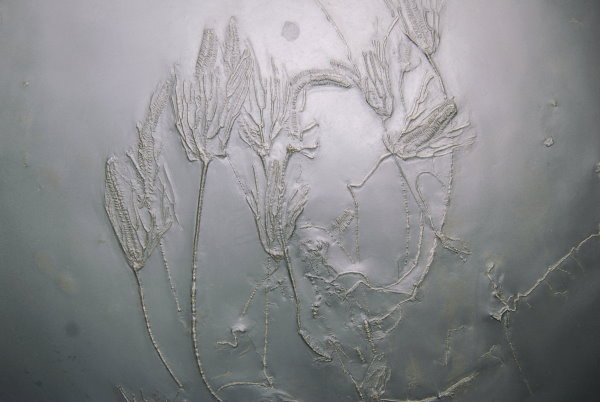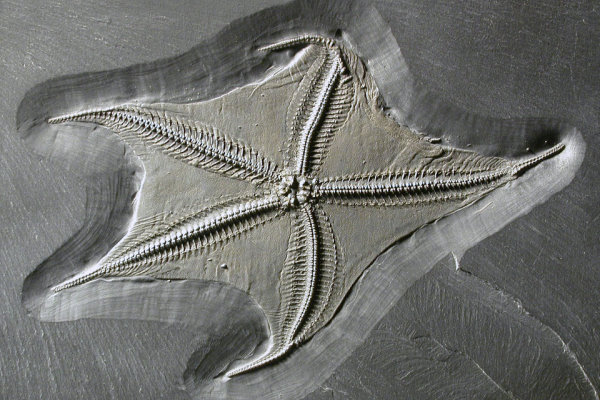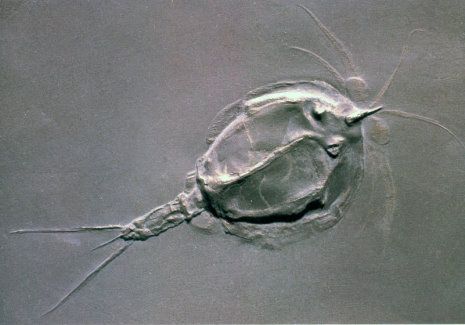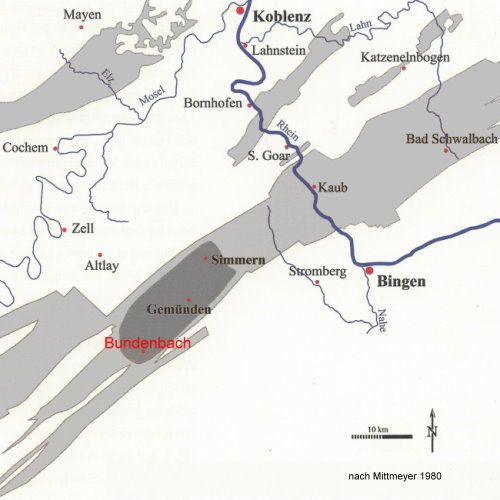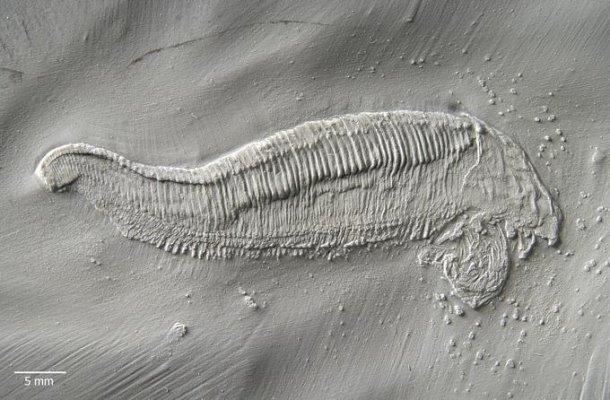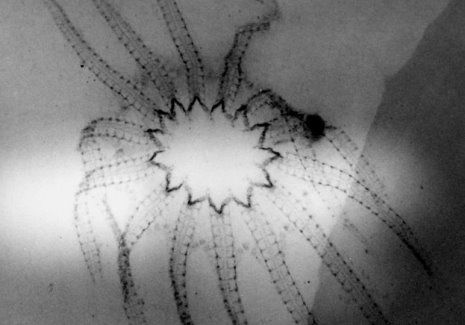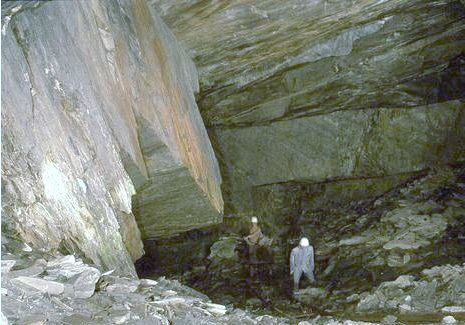The roofing slates of Bundenbach represent the world's most important fossil deposit for crinoids and starfish of the Paleozoic Era.
The fossils owe the uniqueness of their preservation to special circumstances. The remains of organisms are often pyritized as a result of early diagnostic bacterial processes and, in addition to mechanical preparation, allow imaging using X-ray technology.

